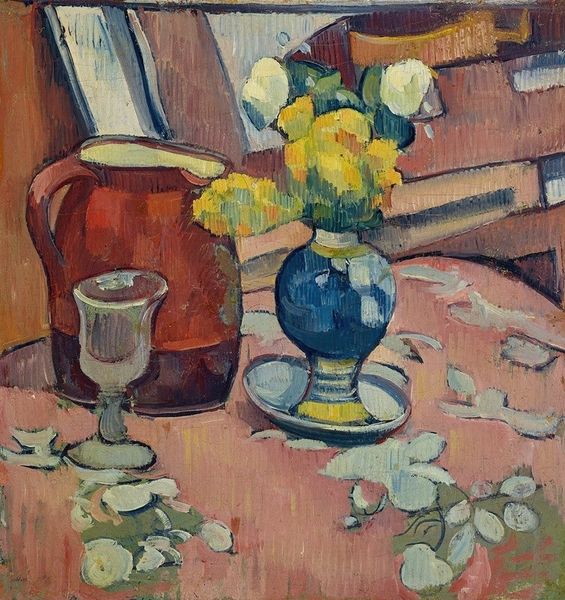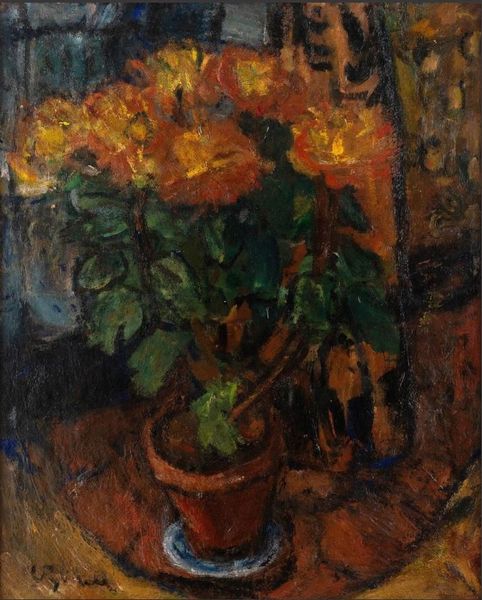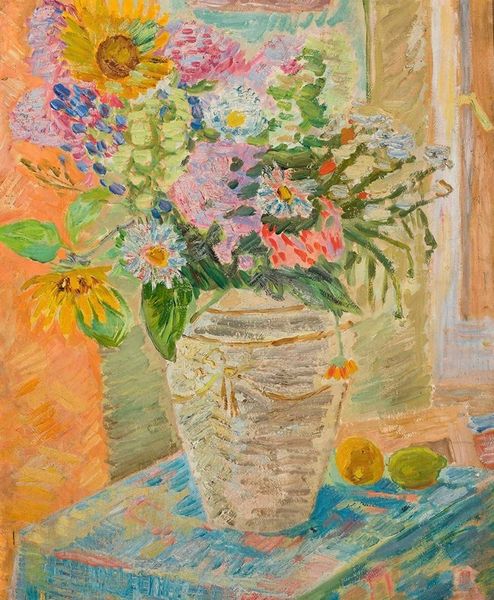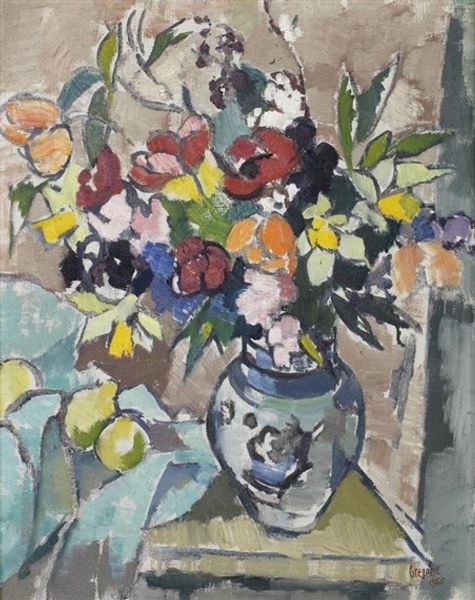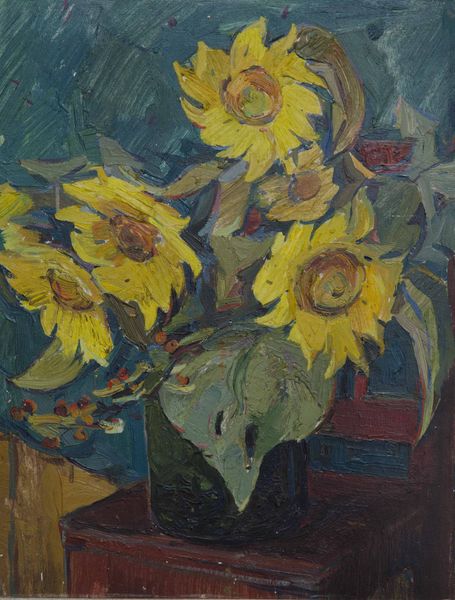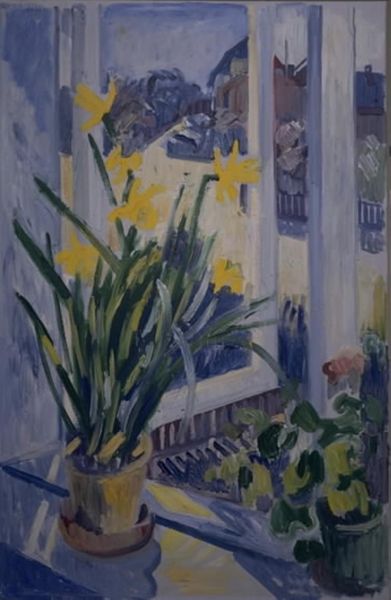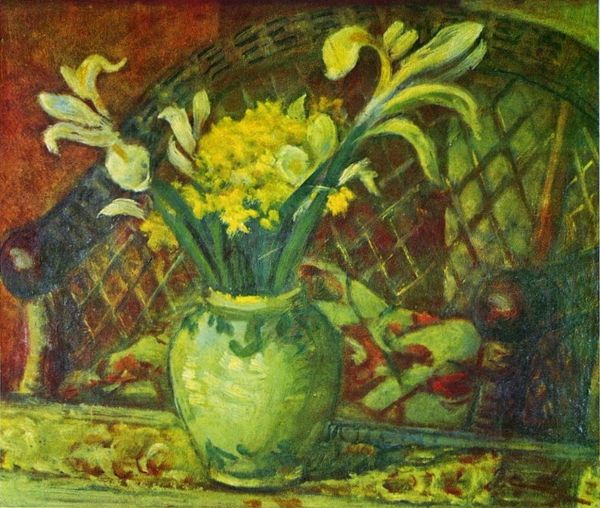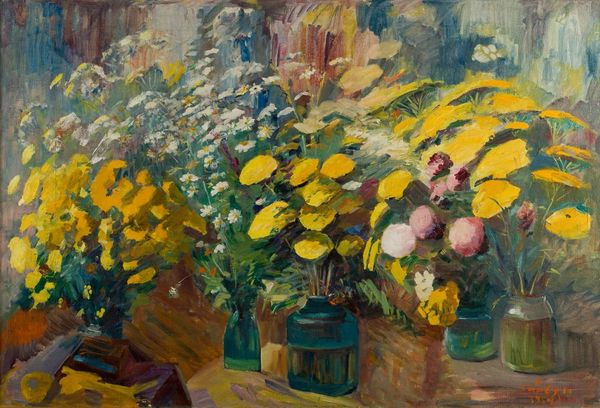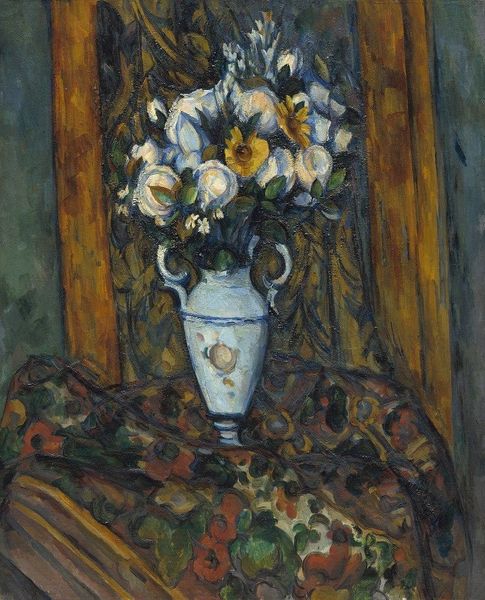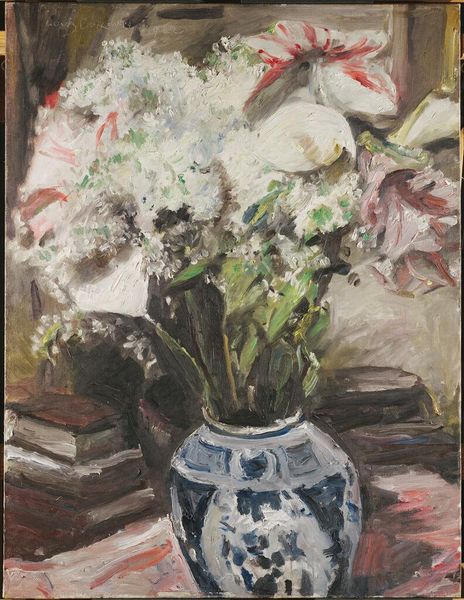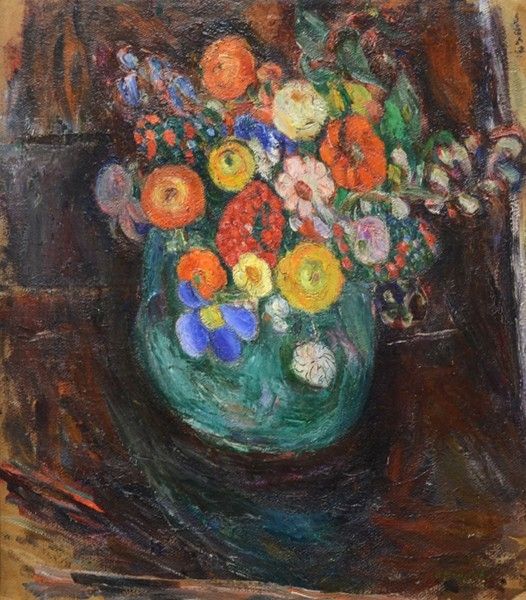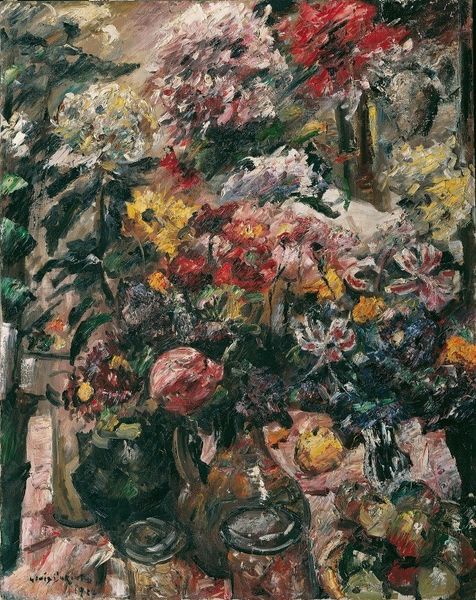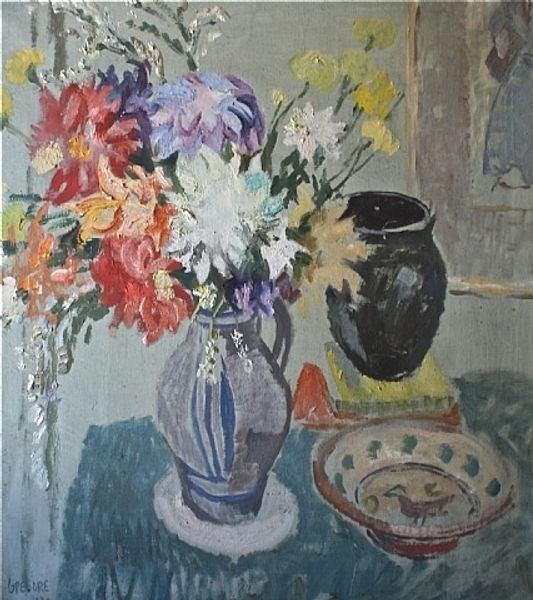
oil-paint, impasto
#
abstract expressionism
#
oil-paint
#
oil painting
#
impasto
#
expressionism
Copyright: Public domain
Editor: So, we’re looking at “Still Life,” an undated oil painting by Sirak Skitnik. There’s a vase of flowers set on what seems like a patterned tabletop, a curtain behind it... it feels very intimate and personal to me. What catches your eye? Curator: It’s fascinating how this "intimate" still life might engage with, even subvert, the expected role of public art. Traditionally, still life was viewed as a very middle-class and safe genre. But how might Skitnik, using an expressionistic style, challenge these expectations? Editor: Expressionistic... you mean the very visible brushstrokes and less realistic rendering? Curator: Exactly. Expressionism, by its nature, injects emotion and subjectivity. Considering the era and Skitnik’s socio-political context, do you think this could be more than just a pleasant domestic scene? Could it be a subtle statement of personal freedom within a constrained environment, perhaps? Editor: That's a fascinating thought! The curtain feels less decorative and more like a barrier now that you mention it. A window blocked from the world. I had been only seeing it for its color. Curator: And how the visibility of the paint and texture can give that reading weight, doesn’t it? The art world is constantly affected by what comes before and what's currently acceptable and what is revolutionary or daring, depending on historical influences. Editor: That really shifts how I see the entire piece. I was drawn in by its aesthetic qualities but now I also want to understand the context in which it was made. Thank you! Curator: My pleasure! It is often those details— visible brushstrokes, a vase— that hide fascinating histories.
Comments
No comments
Be the first to comment and join the conversation on the ultimate creative platform.
